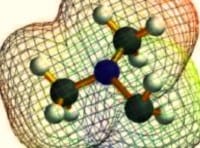
CATALYZER CAPTURES CARBON

New process integrates solar power into the hydrocarbon economy
- Dateline
- 26 February 2026
A new process for capturing carbon dioxide from the atmosphere and turning it into usable liquid fuel has been commercialized and scaled up.
Originally invented ten years ago, the process uses a unique catalyst to bond hydrogen in water with CO2 in the air to form methanol, a useful liquid chemical that can be burned in combustion engines or used to manufacture more complex chemical compounds.
The key to making this a viable industry is the low cost of solar power, which is sufficient energy input for the catalytic conversion, and the distilling of the watery brew it produces. It’s also a great way to store excess solar power for later use, when the sun isn’t shining.
Obviously it works best with high concentrations of carbon dioxide, like the emissions from a coal-fired power station, but the process can even remove CO2 from the general atmosphere, which should make climate change activists very happy.
Now that it’s been commercialized, we will enjoy a double benefit. Not only are we sucking excess carbon from the air, we’re also producing hydrocarbon feedstock for fuel cells and combustion engines, which means we need less crude oil.
It’s been the dream of many a scientist to take sunshine and convert it directly into liquid energy, just like photosynthesis. Perhaps this is the start of a new solar carbon energy economy!
Links to related stories
- Bill Gates predicts a clean-energy breakthrough within 15 years will save the planet - Quartz, 22 February 2016
- How to efficiently convert carbon dioxide from air to methanol fuel - KurzweilAI, 3 February 2016
- MindBullet: THE HYDROGEN ECONOMY FIZZLES BEFORE IT STARTS (Dateline: 15 July 2015, Published: 23 March 2006)
Warning: Hazardous thinking at work
Despite appearances to the contrary, Futureworld cannot and does not predict the future. Our Mindbullets scenarios are fictitious and designed purely to explore possible futures, challenge and stimulate strategic thinking. Use these at your own risk. Any reference to actual people, entities or events is entirely allegorical. Copyright Futureworld International Limited. Reproduction or distribution permitted only with recognition of Copyright and the inclusion of this disclaimer.